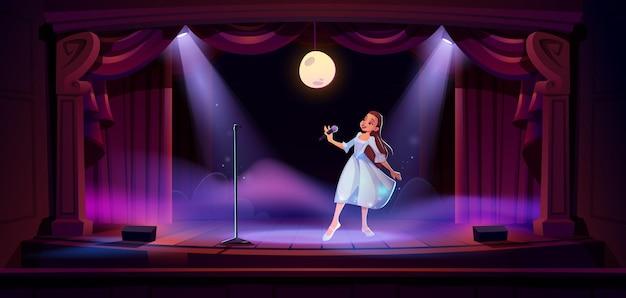Imagine yourself transported to the vibrant and tumultuous era of Elizabethan England. It’s the late 16th century, and you find yourself sitting in the bustling Globe Theatre, eagerly awaiting the start of a new tragedy. The atmosphere is electric, filled with anticipation and excitement. This was the golden age of theatre, and tragedy was the genre that reigned supreme.
In this blog post, we will delve into the world of Elizabethan tragedy, examining its main elements and shedding light on the reasons behind its enduring popularity. We will explore the works of legendary playwrights, including the master of tragedy himself. Yes, you guessed it right – William Shakespeare. We will also unravel the mysteries surrounding the Globe Theatre, its closure, and its legacy in the modern world.
So, grab a virtual seat and join us as we embark on a journey to discover the captivating world of Elizabethan tragedy and unravel its timeless allure.

What Are the Main Elements of Elizabethan Tragedy
Tragedy Strikes: Unveiling the Core Ingredients of Elizabethan Drama
Ah, the Elizabethan era, a time of ruffled collars, grand palaces, and theatrical brilliance. But amidst all the pomp and circumstance, what made the tragic plays of that time truly stand out? Let’s pull back the curtain and explore the main elements that gave Elizabethan tragedy its captivating allure.
A Shattering Protagonist: The Tragic Hero Takes Center Stage
Every Elizabethan tragedy worth its weight in quills had a larger-than-life protagonist, a hero with a fatal flaw that would ultimately lead to their downfall. Whether it be Macbeth’s unchecked ambition or Hamlet’s paralyzing indecision, these complex characters with their relatable flaws seized our hearts and thrust us into their tumultuous world.
Machinations of Fate: Enter the Twist of Destiny
In the realm of Elizabethan tragedy, destiny played its wicked hand with unrelenting force. The notion that circumstances beyond one’s control could shape the course of events was a pervasive theme. From Othello’s tragic misjudgments to Romeo and Juliet’s star-crossed love, fate entangled the lives of these characters, leaving us at once mesmerized and distraught.
Fierce Emotion Engages: Love, Loss, and Everything in Between
What’s a tragedy without a whirlwind of emotions that sweeps us off our feet? Elizabethan playwrights knew the power of an emotional rollercoaster, and they unleashed love, jealousy, grief, and rage upon their audiences. Immerse yourself in the pain of Juliet’s forbidden love or the heartache of Lear’s shattered kingdom, and prepare for an emotional journey like no other.
Theatrical Spectacle: Blood, Swords, and Goosebumps Galore
Elizabethan tragedy embraced drama like a long-lost friend, captivating audiences with its vivid theatrical spectacle. From severed heads to poisonings and epic battles, these plays spared no expense in delivering spine-tingling moments that sent shockwaves through the crowd. Prepare to have your eyes widened, your heart racing, and your gasps blending with the collective sighs of the audience.
Lingua Franca of Poetry: The Eloquence of Verse Takes the Stage
In this world of tragedy, the language was not merely spoken; it soared to poetic heights that left no heart untouched. Shakespeare’s iambic pentameter and rich metaphors transformed everyday dialogue into an exquisite tapestry of words. Prepare to marvel at the lush beauty of sonnets, soliloquies, and rhymed couplets that paint the emotions of these tragic tales with hues of unparalleled artistry.
Reflections of Society: Mirror, Mirror on the Elizabethan Wall
Beneath the sumptuous garments and powdered wigs, Elizabethan tragedy held up a mirror to society itself. These plays explored themes of power, corruption, and the human condition, reflecting the anxieties and tensions of the time. They were both a means of escape and a window into the struggles and complexities of a society in flux.
The Curtain Falls: A Legacy Carved in Tragedy
As we bid adieu to the drama and despair of Elizabethan tragedy, let us remember the enduring legacy it has left behind. With its captivating protagonists, twist of destinies, raw emotions, theatrical spectacle, poetic brilliance, and incisive social commentary, this genre continues to enrapture audiences, even centuries later.
So, grab a quill and parchment, don your finest Elizabethan garb (ruffled collar optional), and allow yourself to be swept away by the timeless allure of Elizabethan tragedy.

FAQ: Main Elements of Elizabethan Tragedy
Who is Considered the Master of Tragedy
When it comes to tragedy, one name stands above all others in the Elizabethan era – William Shakespeare. Often regarded as the master of tragedy, Shakespeare crafted some of the most iconic and heart-wrenching tragedies the world has ever seen.
What Are the Key Ingredients of Elizabethan Tragedy
Elizabethan tragedy is a theatrical art form that has withstood the test of time. Its main elements include:
1. Fatal Flaw or Hamartia
In Elizabethan tragedy, the protagonist possesses a fatal flaw or hamartia, which typically leads to their downfall. Whether it’s Othello’s jealousy or Macbeth’s ambition, these flaws create the perfect recipe for tragedy.
2. Catharsis
One cannot truly appreciate the depths of tragedy without experiencing catharsis. Elizabethan tragedy aims to evoke strong emotions in the audience, allowing them to experience a purging of emotions and a profound sense of relief.
3. Supernatural Elements
Ghosts, witches, and prophecies often take center stage in Elizabethan tragedy. These supernatural elements serve to heighten the tension and create an otherworldly atmosphere that adds to the overall tragic narrative.
4. Foreshadowing
Elizabethan tragedy is no stranger to foreshadowing. Through subtle hints and clues, Shakespeare foreshadows the ultimate downfall of his tragic heroes, leaving the audience on the edge of their seats, eagerly anticipating the tragic twist of fate.
Why Was the Globe Theater Closed
In the year 1613, tragedy struck the iconic Globe Theater when a cannon misfire during a performance of Shakespeare’s Henry VIII set the thatched roof ablaze. This unfortunate event led to the closure of the theater.
Why Were Tragedies So Popular in Elizabethan Times
Tragedies were a hit in Elizabethan times for a multitude of reasons. Firstly, they offered an escape from everyday life, allowing the audience to vicariously experience intense emotions and the grandeur of the human condition. Secondly, tragedy served as a reflection of the societal tensions and conflicts of the time, providing a commentary on human nature and the consequences of unchecked ambition.
Who Had the Privilege of Acting in Elizabethan Theater
During the Elizabethan era, only male actors were allowed to perform on stage. Due to societal norms and restrictions, women were not permitted to act in public theaters. Therefore, the roles of women were played by young boys or men with higher-pitched voices.
Does the Globe Theater Still Exist
While the original Globe Theater burned down in 1613, a modern reconstruction called “Shakespeare’s Globe” was built in London in 1997. This replica faithfully captures the spirit and essence of the original, providing a unique experience to theater enthusiasts and history buffs alike.
What Was Shakespeare’s True Identity
Contrary to popular belief, William Shakespeare was indeed the real name of the great bard. Despite various conspiracy theories and controversies, extensive historical evidence supports the notion that the man from Stratford-upon-Avon was the one and only author of the renowned works attributed to him.
What Happened in the Aftermath of Shakespeare’s Death
After Shakespeare’s death in 1616, his legacy continued to live on. His plays continued to be performed and published, solidifying his status as one of the greatest playwrights in history. Shakespeare’s influence on literature, theater, and culture is immeasurable, ensuring his eternal presence even in the modern world.
Where Did People Sit (or Not Sit) in the Elizabethan Theatre
In the Elizabethan Theatre, seating arrangements were not fixed. Wealthier patrons had the option of sitting in covered galleries, while the less affluent stood in the open yard, often referred to as the “pit.” However, sitting was not always an option, especially for those standing in the pit, creating an interactive and dynamic experience between the audience and the performers.
Who Initiated the Birth of Elizabethan Theatre
The magnificent Elizabethan Theatre owes its existence to a man named James Burbage. In 1576, Burbage built The Theatre, the first dedicated public playhouse in London. This remarkable achievement paved the way for the flourishing of Elizabethan drama and the establishment of other iconic theaters, including the Globe.
